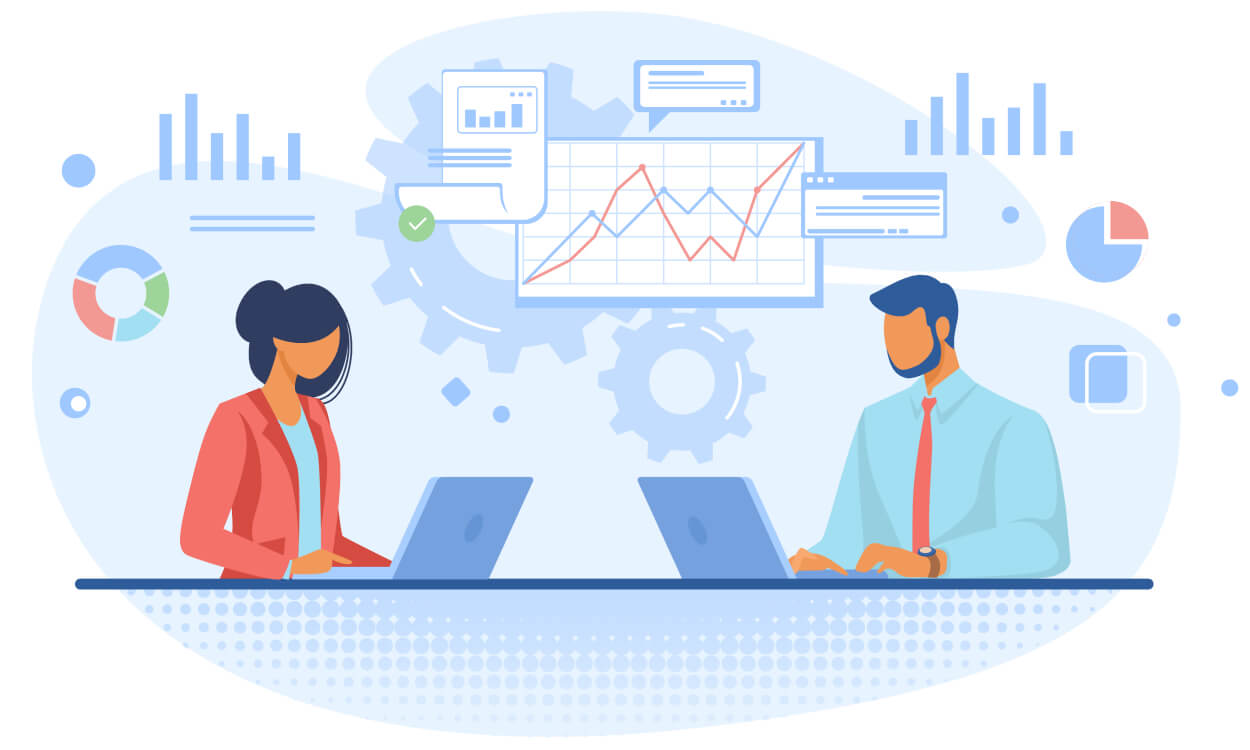How to Integrate New Enterprise Solutions with Existing Systems
July 10, 2024
It’s frequently easier said than done to make the connections. Most businesses have an expanding range of diverse apps, devices, clouds, and networks, in addition to rapidly increasing amounts of data. How can they respond swiftly enough to avoid global disruptions and satisfy constantly changing client needs, considering the complexity of the situation? How do they continue to be lucrative, resilient, and responsive? Enterprise integration is the solution.
What is Enterprise Integration?
The use of technology and procedures to closely integrate devices, clouds, apps, data, APIs, and processes is known as enterprise integration. It combines several integration strategies into a single, coordinated endeavor using a single governance style.
Why is Enterprise Integration Important?
Information sharing between many systems and data sources is made feasible through enterprise integration. Real-time data flow throughout the company enables organizations to automate procedures, boost productivity, obtain deeper insights into their customers, and implement new business models and technology. Enterprise integration is ultimately the secret to agility, enabling even extremely big businesses to change course swiftly.
How To Integrate New Enterprise Solutions with Existing Systems
It’s easy to integrate your business-critical apps with your ERP system. The following are the procedures to set up your ERP Integration with systems utilizing an easy-to-use iPaaS Integrator:
Include System Credentials
To begin with, you must set up the credentials (API token) for your ERP and any additional systems you want to mix.
Make Flows
Establish the foundational template that will govern how your ERP and other apps will communicate, including when and how data should be sent and how CRUD (Create, Read, Update, Delete) actions should be carried out.
Set Up Integration Pipes
In your systems, pipes are nothing more than data points like orders, products, customers, and so forth. All you need to do is set up analogous pipe connections (like Inventory Data) in the ERP and eCommerce systems that are linked.
Configure Modifiers and Mapping
Next, establish linkages between the CRM, eCommerce, and ERP data areas. (For instance, the ERP’s “Customer Name” column was divided and mapped to the CRM’s “First Name” and “Last Name” fields.)
Establish sophisticated business logic to determine the interactions between data fields. (For instance, divide the ERP field “Customer Name” into the CRM data fields “First Name” and “Last Name”).
Turn on Auto Mode
Ascertain that the automation and configuration of the sync schedule and frequency (including real-time synchronization, if required) occur before the ERP system’s interface with other apps goes online. From this point on, the Integrator application is in control.
Typical Challenges in ERP Integration
As previously said, ERP integration addresses several business pain problems, but it does not appear to be a simple process. Integrating your ERP with other business apps presents a few significant hurdles.
These obstacles fall into two categories: pre- and post-integration and both require consideration before action is taken.
Sustaining the ERP Integration
It is possible for new databases to be added or for the specifications of data fields (such as “Customer Name”) in the current data points to change. In such cases, the integration would also need to be modified. If not, an integration failure might arise from an issue with data flows between the ERP and other systems.
Data Standardization amongst Applications
Various data formats and kinds are offered by various programs. What applies to one application (like CRM) may not apply to another (like ERP).
Some data, like a distinct customer ID from the CRM, may occasionally be incompatible with your ERP. It is important to ensure that the various data types are uniformly used throughout programs.
Incorporating Customisation
Interfaces that are built right into your systems, such as ERP, eCommerce, CRM, and others, may not always meet all of your business requirements. Standard solutions are offered by the majority of applications, and standard data intake and outflow are supported by the interfaces that correspond to those applications.
Specialization in ERP System Integration
Given the complexity of your business requirements and the ERP system, it is essential that everyone you bring on board for ERP integration has the same level of expertise and is properly onboarded.
Benefits of Integration of New Enterprise Solutions with Existing Systems
The following are the main benefits of integration of New Enterprise Solutions with Existing Systems:
Business procedures that are automated and optimized
Disconnected and fragmented processes impair operational efficiency, slow down workflows, and provide uneven user experiences. Businesses may connect, automate, and optimize internal operations as well as deliver a seamless employee and customer experience across all digital touchpoints with enterprise connectivity.
Improved understanding of the client
Customer data is sourced from a wide range of data sources and applications and is available in a variety of forms. Businesses can link and analyze all of this data in one location, have a 360-degree perspective of their audiences and consumers, and guarantee privacy requirements are followed via enterprise connectivity.
A future-proof IT environment
It’s common for successful digital transformation initiatives to call for integrating more recent cloud technology with legacy systems. An API-first strategy is used in enterprise integration to combine the old with the new. In this approach, organizations may support new business models and modernize their IT environments while obtaining real-time data from older systems to ensure business continuity.
Opportunities in the economics of APIs
An increasing number of companies are taking advantage of the API economy’s new prospects. By establishing an ecosystem of suppliers, partners, and buyers via APIs, they may promote smooth information sharing, develop distinctive services and business models, and foster competitive differences.
“Aascent Infosolutions specializes in providing innovative enterprise solutions tailored to seamlessly integrate with existing systems. With a focus on efficiency, security, and scalability, Aascent Infosolutions helps businesses navigate the complexities of digital transformation, ensuring smooth and successful integration processes.”
Wrapping up
ERP systems are becoming more and more useful, therefore if your ERP application isn’t coupled with other business platforms like eCommerce or CRM, especially if you’re a manufacturer, distributor, or retailer, it isn’t adequate. Integration involves more than just adding a bunch of new tools and software to your current systems. Only when all of your stakeholders, including partners, customers, teams, and systems, can collaborate in real-time will your company be integrated.
FAQs
What are the initial steps in integrating new corporate solutions into existing systems?
Start by conducting a thorough assessment of your present systems and determining integration requirements. Create a clear integration strategy that includes deadlines, resource allocation, and the selection of suitable integration technologies or platforms.
How are data compatibility issues resolved during integration?
Data compatibility difficulties can be resolved by adopting data mapping and transformation processes. Use middleware or integration platforms to enable data translation between systems.
What are the primary factors for ensuring security during the integration process?
To ensure security, perform rigorous security evaluations and risk assessments. Implement strong authentication and authorization procedures, encrypt data in transit and at rest, and ensure that all systems are constantly updated and patched.




